A good majority of modern Americans have never seen truly dark skies. I was fortunate to grow up in northern Maine in the 1970s with skies dark enough to see the summer Milky Way right from my doorstep. For most of the Eastern Seaboard of the United States, this is no longer the case. During the blackout brought on by Hurricane Sandy over the tri-state area in 2012 and after Hurricane Andrew hit Miami in 1992, many urbanites got to see an unfamiliar sight first hand; a dark night sky. There were even calls to 9/11 reporting fires on the horizon, which were in fact the Milky Way!
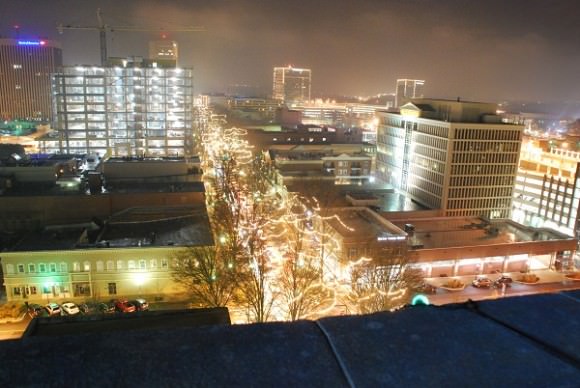
(Photo by Author).
In just over two weeks time on March 10th, most of North America will “spring forward” once again to daylight savings time; three weeks afterwards on March 31st, the European Union will follow suit.
For astronomers, this means waiting until the later evening hours for total darkness and late start times for star parties. If it seems like we spend more of the year on daylight savings time, we in fact do; the Energy Policy Act of 2005 mandates that daylight savings for most of the U.S. (a majority of Arizona is a staunch hold out) now starts on the second Sunday of March and runs until the first Sunday of November, or about 65% of the year. But discussions of DST’s utility or anachronism aside, it puts just one more hurdle between astronomers and what they love: dark skies.
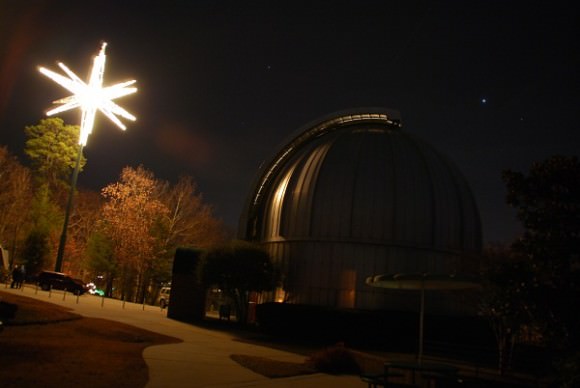
You can’t even see your hand in front of your face under truly dark skies. Such darkness is measured on what’s known as the Bortle Scale, with 1 being dark enough to notice air glow and phenomena like the Gegenschein, while 9 is a washed out inner-city night sky, with perhaps only the Moon and the brightest planets punching through the haze.
We once did a Bortle scale estimation while waiting for an airport shuttle on the Las Vegas strip; Vegas is arguably the most light-polluted locale on the planet. Jupiter, the Moon and the brightest stars of Orion could only be seen if you knew exactly where to look for them. In contrast, we’ve heard many service members remark about how splendid the sky looks from such deployed locations as Afghanistan.
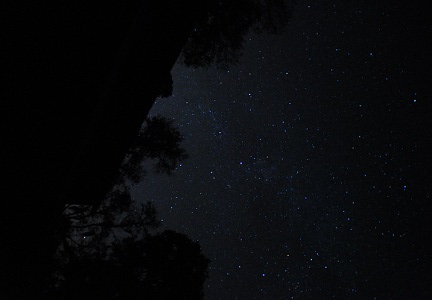
The encroachment of civilization on wilderness areas also means that most school star parties and downtown observatories are restricted to bright targets, and serious deep sky observers must now drive several hours for a reasonably dark sky. Living just outside the Tampa/Saint Petersburg area in Florida, I can actually tell if it’s cloudy or clear at night just by how bright our bedroom appears with lights out. A cloudy sky reflects all the city lights back down, creating a “false dawn” that fills the room.
Dark sky sites are like secret fishing holes for backyard astronomers. Everyone knows of a few, some of which are even carefully hidden and discussed in hushed tones for fear of the light generating hordes which will descend upon them.
For dark skies in the Tampa Bay area, most observers head north to Chiefland along the Nature Coast about a two hour drive north. If you’ve got boat access, a truly dark sky locale can be had in the Dry Tortugas off of the Florida Keys to the south.
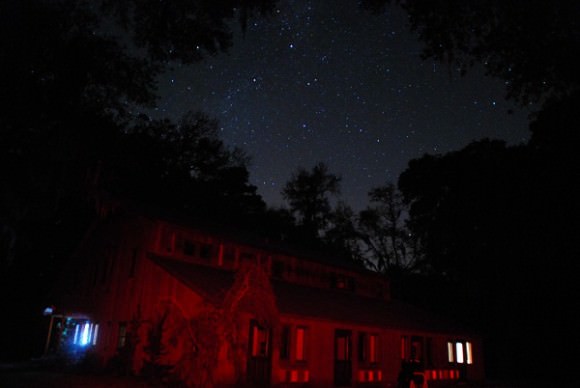
We recently visited such a hidden “dark sky island” in northern Georgia. Dunham Farms is a great old farmhouse Bed & Breakfast in Liberty County near Hinesville, Georgia. Despite how close as it is to Savanna, Dunham Farms sits in a “triangle of darkness,” a rarity along the Atlantic coast. We estimated the sky at a Bortle Scale of 2-3 while we were there doing nighttime astrophotography. Astronomy clubs in nearby Savanna also find dark sky requiem at nearby Tybee Pier, and further north, clubs such as the Midlands Astronomers based out of Melton Observatory in Columbia, South Carolina head to nearby Congaree Swamp.
And so it is along much of the U.S. East Coast, as observers must make to pilgrimage ever further inland in search of dark skies. Truth is, much of nighttime lighting is simply wasted energy headed skyward to illuminate the undersides of clouds and aircraft. Not only does this destroy our pristine night sky, but it’s also a threat to nocturnal wildlife and humans as well. Nigh-time lighting confuses migrating birds, often casuing them to fly into buildings. In 2009 the American Medical Association joined the fight against light pollution, citing it as a health risk. Light pollution effects our natural circadian rhythms, and studies show it may be linked to increased cancer rates as well. Turns out, our bodies need darkness.
But there is light (bad pun intended) at the end of the tunnel. Light pollution ordinances are now on the books in many municipalities. In 2001, the International Dark Sky Association recognized Flagstaff, Arizona as the first dark sky certified city. Increasingly, observatories around cities in Arizona such as Tucson and Flagstaff are being recognized as national scientific assets to be safeguarded.
Of course, legislation on the books is only as good as its enforcement. There are no “light pollution police” on the beat, and ordinances against “light trespass” are only put into practice when someone complains about it. We’ve found that frequently, inviting the neighbors over for a “backyard star party” can avoid having them install a World War II surplus anti-aircraft spotlight in their back yard to begin with… hey, that’s what your security light looks like to us!
And there’s nothing stopping hardware outlets from selling light fixtures that are illegal to install. A good fixture directs light downward where it’s needed. Lowes has recently launched its line of dark sky compliant outdoor lighting, and hey, if enough customers “vote with their wallets” more may follow suit. Its money saved in these cash strapped times, and a night sky gained!

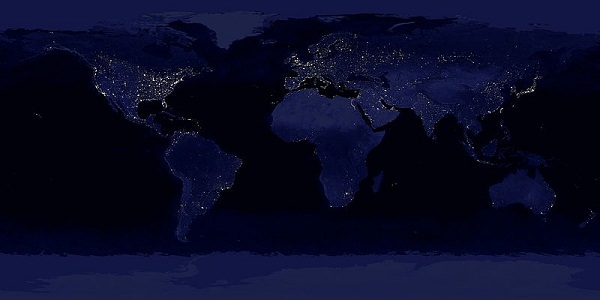
Minor nitpick here: The correct term is “Daylight Saving Time,” not “Daylight Savings Time.”
I remember during the first big quake in Christchurch, NZ that the city was hit with about 95-98% blackout (reports vary). It was about 3-4AM and we were wandering around the neighbourhood checking on other people, but the whole time I was just staring at the sky. I’ve been in dark sky locations before, but it just felt weird seeing that from the middle of the city.
Perhaps, in the not too distant future, a flight to orbit will become necessary to actually see stars? We are definitely headed in that direction… a new market?
Peaks of Otter is a nice place to unplug (seriously, you get one power outlet per room). It’s in a valley and the mountains shield the sky from light pollution. The valley is wide enough to see a fairly big sky. We went there one time for an extended weekend. I went outside the first night to get something from the car. All of the lights had been turned out, and it was very very dark…except for the sky which was full of stars. I quickly grabbed my binoculars and sat back on a bench. It was a clear, dry, moonless night, and I could see millions of stars, clusters, nebulae and galaxies. There is a small lake that was so still that night, I could see a mirror of the sky. It’s also a great place to enjoy nature trails, hiking, climbing, and wildlife. There are hundreds of deer there, some of which will allow you to get within a few feet. There’s also bears and skunks. 🙂 Be warned – you have one (1) power outlet in the room. It’s
Try to plan a trip in the fall, or in the early spring. Summer humidity makes viewing less awesome.
I live in a rural area, and even there skies are polluted. I know of a few dark patches, but you can still see light from distant cities.
Excellent article Dave! Keep writing about LP! One clarification though…. Chicago is measured via satellite as the most light polluted place on the planet. The satellite data was recently published in Nature geoscience clearly showing Chicago on top. See paper by Harald Stark here: http://www.nature.com/ngeo/journal/v4/n11/full/ngeo1300.html cheers+stars, Audrey
Thank you for your article, David.
Dark skies are extinct over Iowa, like the original prairie now 99.9% replaced by GMO’d corn, beans, hog and egg factories, roads, towns, and lights, lights, lights!
I’m a retired earth science teacher and a lifelong amateur astronomer, or was, until cataract surgery assassinated astronomy for me.
My nearly starless views, even under dark skies, provide a perspective most astronomers don’t have, driving me to alternative attitudes about our light blight plight.
Like other astronomers, I fought light using IDA orthodoxy, but I’ve matured and passed through a portal…I see the light. Light pollution is just one symptom of a deadly disease, and unless we cure that disease, the symptoms will persist.
My health prevents me from traveling to dark sky sites during retirement to share my light pollution solution with astronomers eye(piece) to eye(piece).
The essence of my light pollution solution is reality and change — the reality that light pollution waxes, dark skies wane, and that we must change immediately how we fight light blight.
I formed my solution to light pollution when it whitewashed my observing site and cataract surgery stole my observing sight.
My light pollution solution has evolved. Unlike the IDA dogma — a one-size-fits-all modus operandi — my strategy relies on diversity, including support and aid from cadres of organized astronomers. Two grassroots organizations — the Astronomical League and Astronomical Society of the Pacific — are perfectly positioned to promote dark skies. Sadly, neither make dark skies their top priority! This must change.
Please read my website (especially if you disagree with me), reflect upon my light pollution solution, and judge for yourself if we astronomers are “winning” or “losing” our night light fight!
Only one-tenth of one percent of Iowa’s prairies are extant; 99.9% are extinct! Are you going to fight to preserve dark skies where you live, or allow them to be “plowed under” and replaced by GMO’d (MLO’d?) nighttime lights? Think about it!
http://www.darkskyinitiative.org
Sunny Days, Milky Way Nights.
Stargeezer Jack aka Dark Sky Guy, Dark Sky Knight.